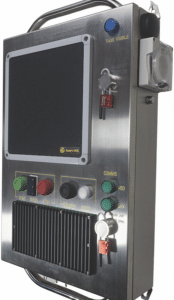Australian Mining sat down with Smart-VOD to talk about its incremental approach to ventilation for underground mining.
While technology in the mining industry has evolved significantly over recent years, most underground mining vehicles being used today are still powered by diesel motors.
This means forced air ventilation is required to remove the diesel exhaust and blast gases, and to reduce the ambient temperature for underground operators.
A ventilation system is used to solve these issues by providing fresh air for workers, removing contaminants such as dust, diesel fumes and blast gases, and by controlling the temperature.
Underground mines have primary fans located above ground, drawing fresh air underground and working in combination with secondary fans to force fresh air into the working face of blind headings.
The energy cost of each secondary fan is substantial – often higher than the fan’s purchase price.
To help address this challenge, Smart-VOD’s ventilation on-demand system for underground mining minimises power usage and associated costs while complying with underground mining ventilation standards.
“There are various approaches to ventilation on-demand, most of which are whole-of-mine approaches and involve a centralised control function. The whole-of-mine approach has substantial capex (capital expenditure) and a single point of failure,” Smart-VOD told Australian Mining.
“By comparison, Smart-VOD is an incremental approach to ventilation on-demand, capable of being rolled out one fan at a time.”

Image: Smart-VOD
Smart-VOD’s ventilation on-demand solution uses radio-frequency identification to track vehicles entering and exiting a ventilation zone and provides demand control signals based on vehicle locations.
“By understanding the mix of vehicles in the ventilation zone, the system can adjust the fan speed to supply the required air volume, reducing energy and air usage,” Smart-VOD said.
“Additional benefits include accelerated clearance of blast gases, allowing for an expedited return to mining after a blast and a reduced demand on upstream ventilation and power-generation infrastructure.”
According to Smart-VOD, its ventilation on-demand system has delivered 54 per cent in energy savings over the last 100,000 hours of operation.
A contributing factor to the significant savings is the fact the system has been designed to operate autonomously, without the need for continuous network connectivity. This also grants operations a higher level of efficiency due to the elimination of human error.
“Each zone unit is independent of one another and can operate fully autonomously,” Smart-VOD said. “This is useful in the case of fault in the communication network. The zone unit will continue to function autonomously providing ventilation on demand.”
Starting with one Smart-VOD zone unit can provide ventilation on-demand in a single blind drive, leading to savings from the moment it is installed.
“With this incremental approach, the set-up process has minimal impact on mining operations,” Smart-VOD said. “Another benefit is the low costs associated with trying ventilation on-demand. Once a customer is comfortable with the technology, additional ventilation zones can be established to form a network of ventilation.”
Implementing more Smart-VOD zone units will mean further benefits:
Coordination of fan control with other zone units and primary fans at a site during clearance of blast gases
Configuration updates to detail zone and site-wide settings, mine vehicles and updates to business rules
Each zone unit advising others of vehicle sightings, allowing for an ensemble of zone units to auto-correct any location errors that might occur
“An incremental approach to ventilation on-demand is proving to be efficient,” Smart-VOD said. “Energy savings are realised as soon as the first ventilation zone is established. As the network is further established, those energy savings grow.
“This technology is helping underground mines to not only save significant amounts of energy but also to significantly reduce their emissions and carbon footprint.”
This feature appeared in the July 2024 issue of Australian Mining.




